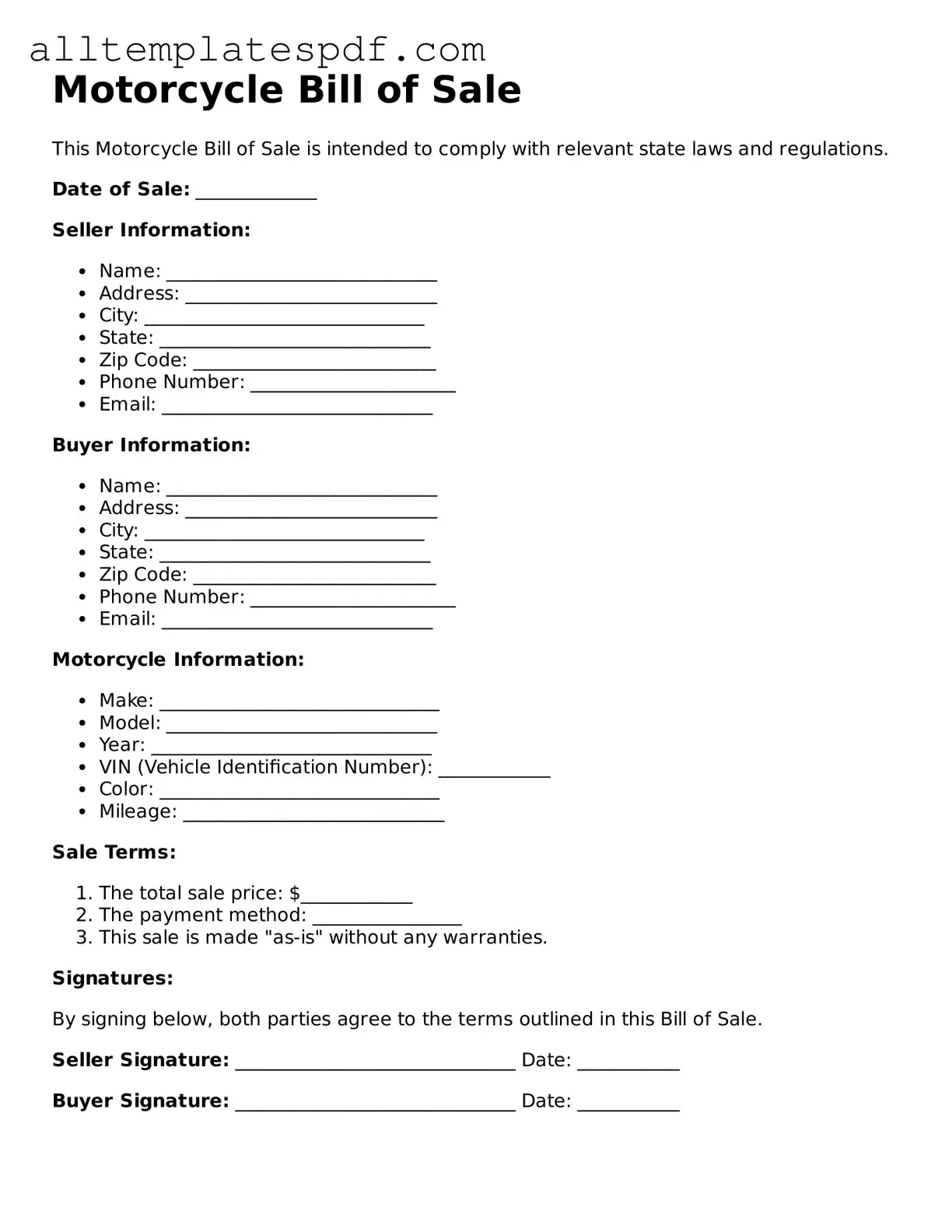Filling out a Motorcycle Bill of Sale form is an important step in the process of buying or selling a motorcycle. However, many individuals make common mistakes that can lead to complications down the road. Understanding these errors can help ensure a smooth transaction.
One frequent mistake is failing to include complete information about the motorcycle. Essential details such as the Vehicle Identification Number (VIN), make, model, and year of the motorcycle should be clearly stated. Omitting any of this information can create confusion and may lead to disputes over ownership.
Another common error is not providing accurate contact information for both the buyer and seller. This includes full names, addresses, and phone numbers. Incomplete or incorrect contact details can hinder communication and complicate any future issues that may arise after the sale.
Some individuals neglect to document the sale price. While it may seem straightforward, leaving this section blank or writing an ambiguous amount can lead to misunderstandings regarding the transaction. Clearly stating the sale price is crucial for both parties and may be required for tax purposes.
Additionally, many people forget to date the bill of sale. A date is essential as it establishes when the transaction took place. Without a date, there may be uncertainty about the timeline of ownership, which can be problematic if disputes arise later.
Another mistake is not having the bill of sale signed by both parties. A signature serves as proof that both the buyer and seller agree to the terms outlined in the document. Without signatures, the validity of the bill of sale may be questioned, leading to potential legal issues.
Lastly, individuals often overlook the importance of making copies of the completed bill of sale. Both parties should retain a copy for their records. This documentation can be vital if any disputes arise or if proof of ownership is needed in the future.
By being aware of these common mistakes, individuals can better navigate the process of completing a Motorcycle Bill of Sale. Taking the time to ensure all information is accurate and complete can help prevent complications and provide peace of mind for both buyers and sellers.
